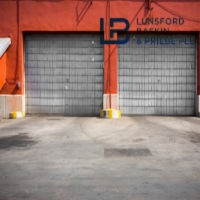Do You Work in A Sick Building?

“Sick Building Syndrome” sounds like something made up by a whimsical writer who likes to personify architectural structures, but it is, in fact, a real ailment. The Environmental Protection Agency (EPA) defines SBS as something that occurs when “building occupants experience acute health and comfort effects that appear to be linked to time spent in a building, but no specific illness or cause can be identified.”
You have probably already spotted the awkward clause in that definition: “no specific illness or cause can be identified.” If you feel that you are suffering from SBS and that you are therefore entitled to workers’ compensation, you may want to consult an experienced workers’ comp attorney to help you prove your case.
Sick Building Syndrome Characteristics:
- Acute health or comfort related effects that seem to be linked directly to time spent in the building
- People suffering may all work in one particular room or may work anywhere in the building
- No specific illness or cause can be identified
Sick Building Syndrome Symptoms:
- Headache
- Dizziness
- Nausea
- Eye, nose, or throat irritation
- Dry cough
- Dry or Itchy skin
- Difficulties in concentration
- Fatigue
- Sensitivities to odors
- Vocal hoarseness
- Exacerbation of asthma
- Personality changes
According to the NIH, there are several possible culprits for SBS:
1. Chemical contaminants:
These contaminants can enter buildings from the outside as well as being present in the building itself. For example, outside contaminants can include motor vehicle exhaust, combustion byproducts, radon, formaldehyde, asbestos, dust, and lead paint. Inside contaminants can include volatile organic compounds (VOC). Per the NIH, the main sources of VOC are adhesives, upholstery, carpeting, copy machines, manufactured wood products, pesticides, and cleaning agents.
2. Biological contaminants:
Damp and warm environments can be breeding grounds for all kinds of contaminants. Often there is standing water in drain pipes, ducts, air conditioners, or humidifiers. Ceiling tiles, upholstery, and carpets can also harbor problem bacteria, viruses, or molds. House mites and insect and bird droppings can also be sources of biological contamination.
3. Inadequate ventilation:
According to the World Health Organization (WHO), indoor air quality may be the cause of a high amount of health complaints in approximately 30% of all new and remodeled commercial buildings.
4. Electromagnetic radiation:
Sources for electromagnetic radiation include clock radios, TVs, charging units for mobile phones, security systems control panels, microwaves, fuse boxes, power lines, and wiring. Basically, anything that causes electrically charged particles to move through the air is a suspect.
5. Poor and inappropriate lighting with absence of sunlight, bad acoustics, poor ergonomics, and humidity:
Lighting that varies in intensity can cause the pupils to dilate and contract, causing eye irritation. Some studies have shown that tinted windows cause eye strain and soreness; others have shown that employees who sit near windows have fewer symptoms. Low-frequency sound (about 7 Hz) is often amplified in rooms without adequate ventilation. These vibrations can trigger symptoms of SBS. There is evidence of a correlation between inside temperatures of 73.4 degrees F and above and symptoms of sick building syndrome.
What to do if you suspect that you are suffering from Sick Building Syndrome
It is up to your employer to provide a safe and healthy environment for you to work in. If this is not the case, and you are ill from SBS, you may be able to claim for workers’ compensation.
- First, inform your boss or manager about the problem. Make sure to put your concerns in writing so that you have documentation if the procedure isn’t followed.
- Make sure to visit your doctor and gather all bills, receipts, and medical records.
- Make a note if anyone else you work with has similar symptoms to you.
- Keep a journal of your symptoms, especially if they seem to disappear or improve when you are out of the building or on vacation.
- If your symptoms persist, make a claim for workers’ compensation. You will have to prove that you are ill and that the building caused your illness. Inform your employer in writing.
- Your employer’s insurer will notify Louisiana’s Office of Workers’ Compensation Administration (OWCA), and they will review your claim and decide whether or not you are eligible.
- Because it is not as easy to prove sick building syndrome as it is to prove, say, a broken leg, you may have difficulties with your claim. Consult an experienced Louisiana workers’ compensation attorney to explain your legal rights and to help you navigate this process from the beginning, but especially if you are denied.
For help with a Louisiana workers’ compensation claim, call the Louisiana workers’ compensation lawyers at Lunsford, Baskin & Priebe PLLC in New Orleans for a free consultation at 601-488-3975.
